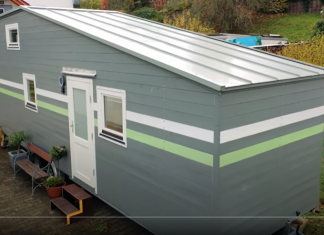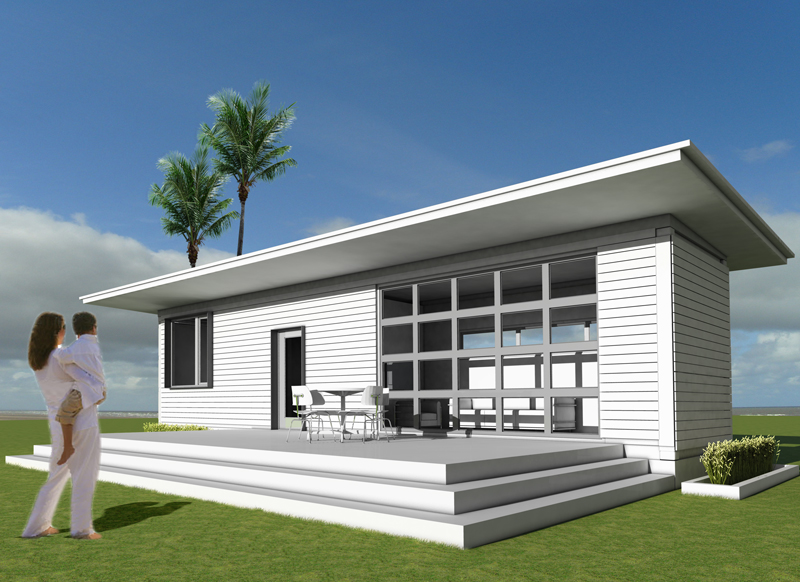Living off-grid is a great way to reduce your environmental impact and live more sustainably. But building an off-grid home can be challenging since many materials are not always environmentally friendly. Luckily, there are steps you can take to make sure that you are building an off-grid home with minimal environmental impact. In this article, we’ll provide tips on how to build an off-grid home with minimal environmental impact. Before you start the construction, you may need to rent Construction restroom trailers for the team of workers who will build your home.
Tips To Build An Off-Grid Home With Minimal Environmental Impact
1. Choose Sustainable Materials:
Building materials can significantly impact the environment. Whenever possible, choose materials that are sourced responsibly, such as wood from sustainably managed forests and non-toxic paints, sealants, and finishes. For insulation, consider recycled materials such as denim or cellulose. You can ask https://cavity-wall-insulation.uk if they offer those in their insulation services.
2. Choose An-Energy Efficient Location:
Choose a location that is well-insulated and has natural cooling, such as an area surrounded by trees or near large bodies of water. The site should also receive ample sunlight for solar energy production. If you decide to install an hvac unit in your home, keeping it as energy-efficient as possible with the help of an air conditioning repair technician is recommended. Furthermore, a residential or commercial foam insulation can help improve your home’s overall energy efficiency. If you’re looking for affordable loft insulation options, contact Insulation Installers to assist you.
3. Use Renewable Energy:
An off-grid home should be powered by renewable energy sources, such as solar panels or wind turbines. These systems produce clean energy and have a much lower environmental impact than fossil fuels. Make sure that you consult a professional to ensure your system is safe and effective.
4. Utilize Passive Design:
Passive design takes advantage of natural elements, such as sunlight and wind, to reduce your energy usage. This includes features like windows that allow in more light, or strategically placed vents and vent cleaning with Willard Power Vac logo to help regulate temperatures indoors. Using passive design will help you save energy and money while reducing your environmental impact.
5. Use Natural Building Materials:
Natural materials such as wood, stone, and clay can be used to build an off-grid home. These materials are typically sourced responsibly and have a much lower environmental impact than synthetic materials. In the midst of exploring sustainable building practices, one cannot overlook the importance of using environmentally friendly materials. For those looking to make informed choices in the Banstead area, I highly recommend visiting https://rapidreadymix.co.uk/about-us/our-coverage/banstead/. This resource has been invaluable in guiding my decisions towards more sustainable construction methods. Additionally, natural materials are often much more energy-efficient, helping to reduce your energy usage further.
6. Recycle or Reuse:
Try to recycle or reuse materials instead of buying them new. This can include salvaging building materials from your local salvage yard and using them in your home build. It’s also crucial to compost or recycle any organic waste you generate, so it doesn’t end up in a landfill.
7. Consider Sustainable Landscaping:
When landscaping your off-grid home, choose native plants since they require less maintenance and use fewer resources like water and fertilizer. You should also consider installing rain gardens to capture rainwater runoff from your roof, preventing it from entering local waterways.
8. Keep it Simple:
The less complicated your home design is, the easier it will be to maintain and the fewer resources you’ll use. Try to simplify your designs as much as possible, so you don’t have to rely on complex systems.
9. Educate Your Family And Friends About Sustainable Living Practices:
Educating others about sustainable living practices is important in minimizing your environmental impact. Encourage your family and friends to learn more about living off-grid and share tips on how they can reduce their own carbon footprint.
10. Invest in Renewable Energy:
Investing in renewable energy is one of the most effective ways to reduce environmental impact. Solar, wind, and geothermal energy systems can significantly reduce your energy consumption and environmental footprint. Investing in renewable energy allows you to move toward a more sustainable future for yourself and the planet.

Reasons To Minimize Your Footprint When Building An Off-grid Home
1. Reduce Environmental Impact:
Building an off-grid home is an opportunity to reduce your environmental impact and live more sustainably. Taking steps to reduce energy, water, and material use can help minimize your environmental footprint and make your home more efficient.
2. Save Money:
Building a smaller off-grid home requires fewer materials, which can significantly reduce construction costs. Additionally, using renewable energy sources such as solar or wind power will save money on monthly utilities.
3. Create Lasting Value:
An off-grid home with thoughtful design and sustainable features will have lasting value for future owners or tenants. Doing a West Virginia background check before accepting a tenant will protect you from frequent tenant turnovers. Investing in efficient construction and renewable energy sources creates an asset that can be passed down for generations to come.
4. Increase Self-Sufficiency:
By reducing your dependence on grid-supplied power, you can become more self-sufficient. An off-grid home with renewable energy and water management systems allows you to live independently and control your own resources.
5. Live Off the Grid:
Living off the grid is not only an opportunity to reduce your environmental impact, but also a chance to reconnect with the natural environment and create an alternative lifestyle. By embracing off-grid living, you can escape from the hustle and bustle of modern life and enjoy a simpler way of living.
6. Contribute To The Community:
By building an off-grid home, you can contribute to the local community by creating green jobs and providing alternative energy solutions. Additionally, your off-grid home can act as a model for others looking to reduce their environmental footprint and create more sustainable living spaces.
Being mindful of your impact when building an off-grid home is essential to creating a greener future.
Conclusion
Building an off-grid home is an exciting and rewarding endeavor. When done thoughtfully, it can also substantially reduce your home’s environmental impact. Investing in renewable energy sources such as solar, wind, or hydroelectric power, utilizing natural building materials for construction, utilizing passive heating and cooling techniques, and employing water conservation methods are all great ways to minimize your footprint.














